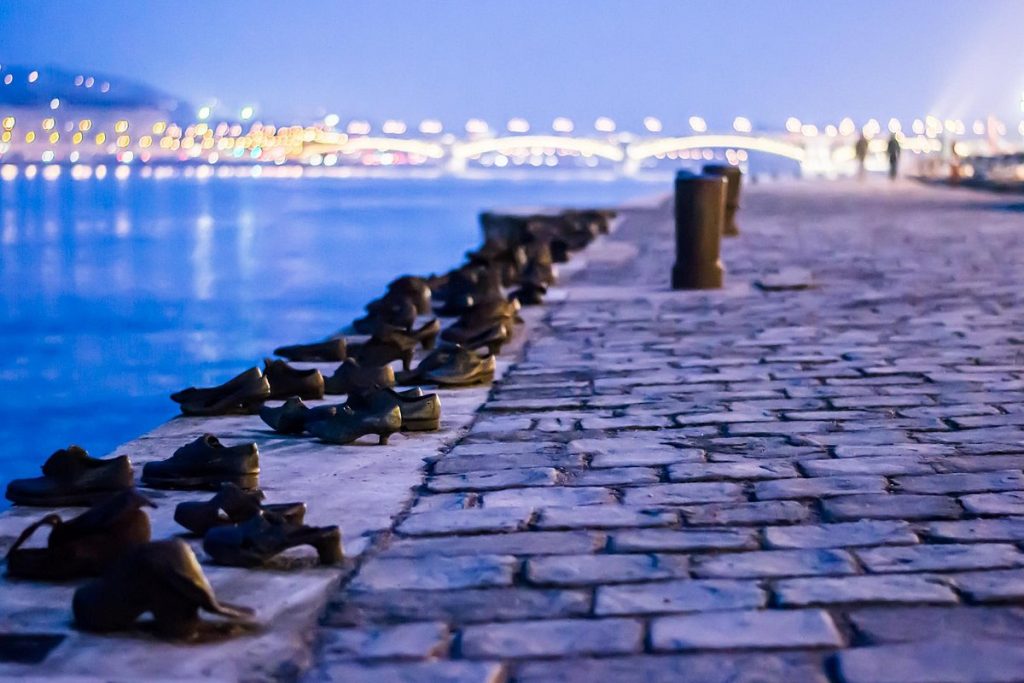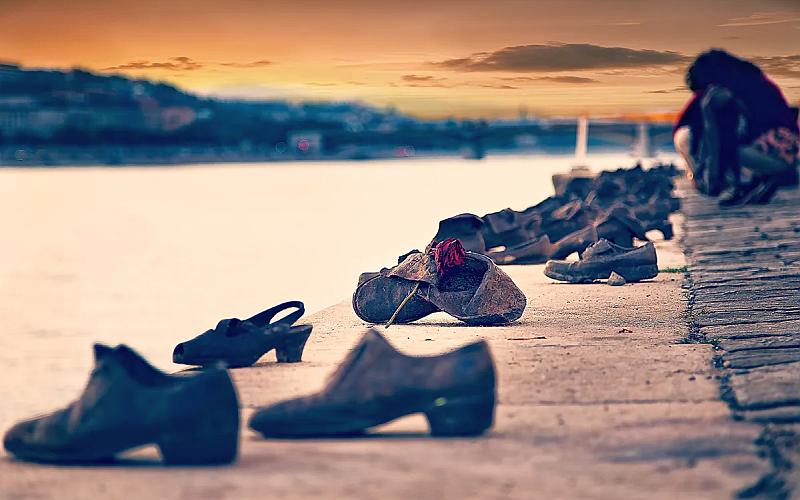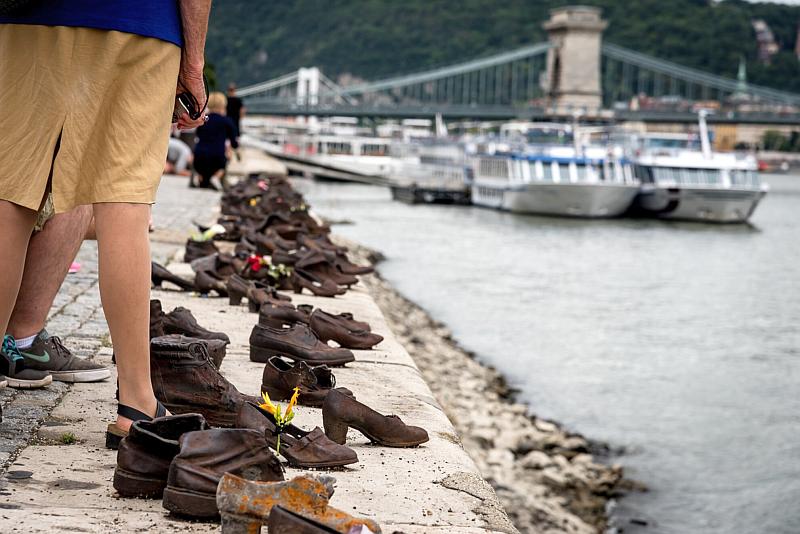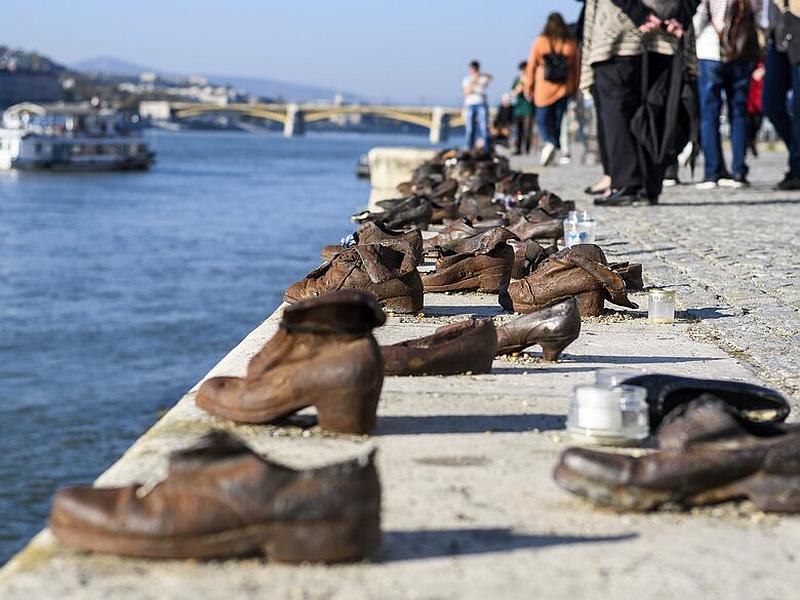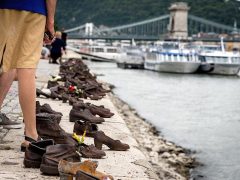Shoes on the Danube Bank: A Silent Testament
Whispers of the Past by the Danube
A simple and profound memorial lies along Budapest’s picturesque Danube embankment: 60 pairs of iron shoes. Each pair is a silent testament, echoing the cries of souls lost to history’s atrocities.
A Solemn Tribute to the Lost
As World War II reached its grim climax, Hungary witnessed its own shadowed chapter. The Arrow Cross Party, after taking power, unleashed a reign of terror, executing innocent Jews on the banks of the Danube. Before their tragic end, victims were instructed to remove their shoes, possessions that held value during those dire times.
The executioners then collected these shoes; their worth was commodified even in the face of death. This act represented the era’s brutality and the oppressors’ dehumanizing nature.
Shoes on the Danube: The Memorial’s Genesis
Film director Can Togay and sculptor Gyula Pauer’s vision brought this harrowing chapter of history to life. The pair created the Shoes on the Danube memorial to pay homage to the souls lost. This installation, a line of cast iron shoes facing the river, is a stark reminder of the cost of hatred and intolerance.
In addition to the shoes, plaques in Hungarian, English, and Hebrew tell the story, ensuring that the victims’ memory never fades.
Did you know about the Shoes on the Danube Bank?
The “Shoes on the Danube Bank” is a poignant and powerful memorial in Budapest, Hungary, dedicated to the Jewish victims of the Holocaust. Here are some key aspects of this memorial:
- Location and Description: Situated on the east bank of the Danube River near the Hungarian Parliament Building, the memorial consists of 60 pairs of period-appropriate shoes cast in iron. The shoes are set along the river’s edge, looking like their owners have just stepped out of them.
- Historical Background: The memorial commemorates one of the tragic events of World War II when members of the Arrow Cross Party (a fascist and anti-Semitic organization allied with Nazi Germany) murdered thousands of Jews in Budapest. Many of these victims were forced to remove their shoes before being shot at the edge of the river so that their bodies would fall into the water and be carried away. The shoes symbolize the last remnants of the victims.
- Concept and Creation: The “Shoes on the Danube Bank” was created by film director Can Togay and sculptor Gyula Pauer and was unveiled on April 16, 2005. The memorial aims to provide a somber reminder of the atrocities committed and to honor the memory of the victims.
- Types of Shoes: The collection of shoes includes various styles, such as men’s work boots, women’s shoes, and children’s footwear, representing the diversity of the victims. This detail adds to the emotional impact of the memorial.
- Commemorative Practices: Visitors to the memorial often leave candles, flowers, or stones (a Jewish mourning tradition) in and around the shoes as a tribute to those who lost their lives. It has become a site of reflection, mourning, and remembrance.
- Educational Significance: The “Shoes on the Danube Bank” serves not only as a memorial but also as an educational site, reminding current and future generations of the horrors of intolerance, hatred, and war.
- Impact and Recognition: The memorial is recognized internationally as a moving and effective tribute to the victims of the Holocaust. It has become a must-visit site for tourists in Budapest, drawing attention to the city’s history during World War II.
The “Shoes on the Danube Bank” is a powerful testament to human tragedy and the importance of remembering the past to ensure such atrocities are never repeated. It embodies a silent yet eloquent plea for tolerance and peace.
Conclusion
Budapest’s Shoes on the Danube Bank is more than a mere memorial; it’s a call for reflection. The shoes, left behind in a moment suspended in time, implore us to remember and to vow never to let history repeat its mistakes.
